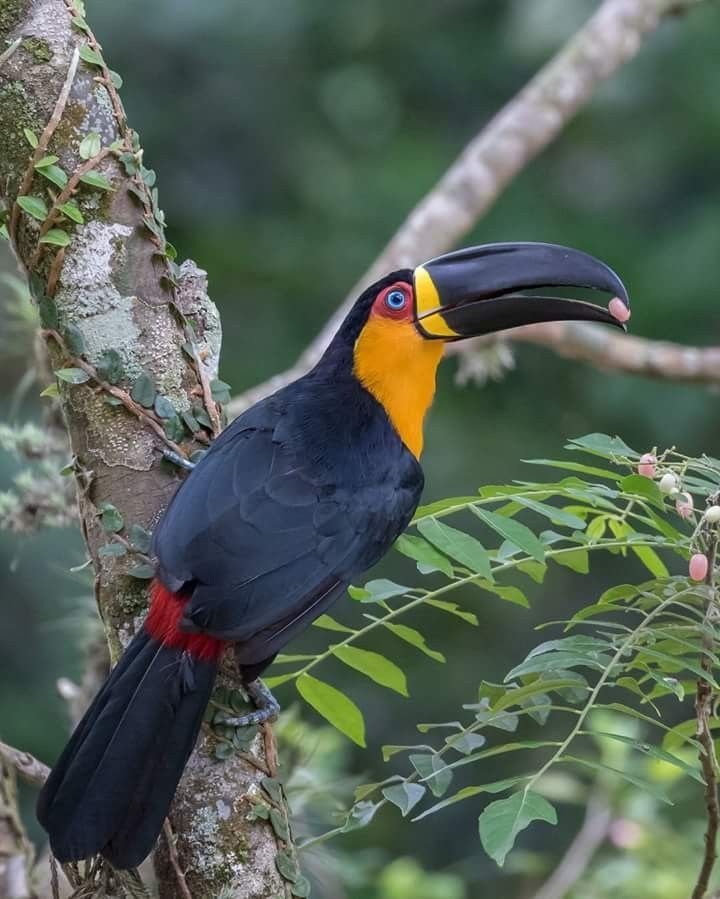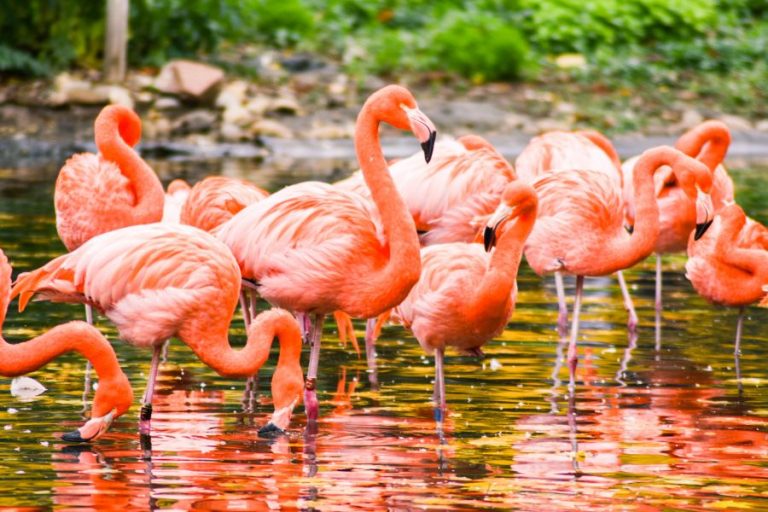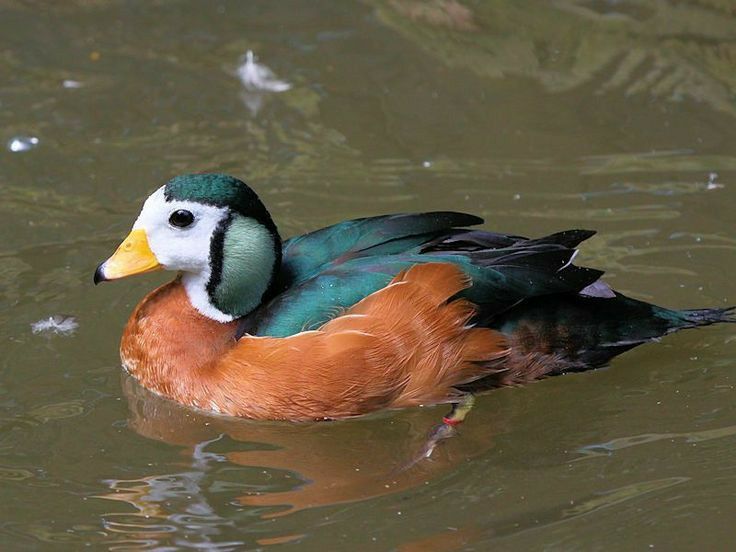Jewels on the Water: The Mandarin Duck
On a still autumn lake in East Asia, the mist lifts to reveal a scene of breathtaking elegance. A pair of ducks glide silently across the mirrored surface, the male a vision of flamboyant color, the female a portrait of quiet grace. Together, they embody a timeless symbol of love and fidelity: the Mandarin Duck (Aix galericulata).
A Living Work of Art
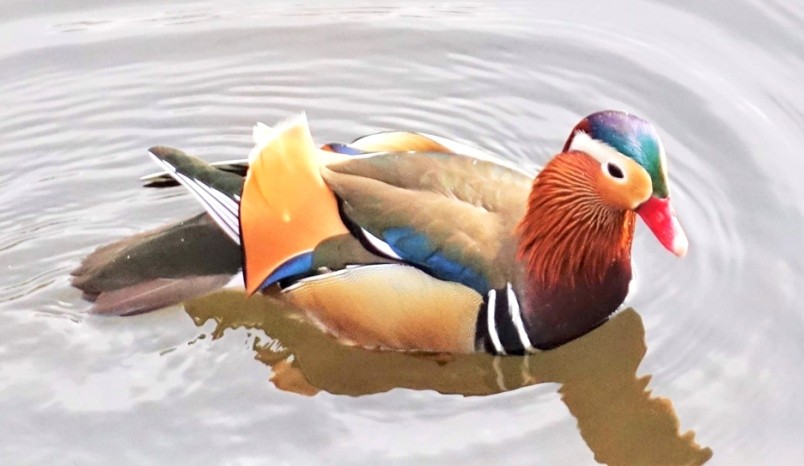
The male Mandarin Duck is one of the most dazzling birds on Earth. His plumage is a symphony of contrasts—orange “sails” that rise boldly from his back, a shimmering green and purple crest, cheeks brushed in ivory, and flanks of chestnut and cream. Each feather seems painted by hand, a masterpiece of nature’s palette. The female, by contrast, wears a soft cloak of gray-brown with delicate white eye-rings, blending seamlessly with the reeds. While less flamboyant, her subtle beauty carries an understated charm, the quiet complement to her mate’s brilliance.
Where They Belong
Mandarin Ducks are native to East Asia, found in China, Korea, Japan, and Russia’s Far East. They prefer wooded ponds, slow rivers, and lakes bordered by willows and maples. In recent decades, introduced populations have also thrived in Europe and North America, where they grace ornamental gardens and quiet streams. Their diet is varied—acorns, seeds, aquatic plants, insects, and small fish—making them both adaptable and resilient.
Bonds Written in Water
Unlike many ducks, Mandarin Ducks are famed for their strong pair bonds. Males court females with ritualized displays—bowing, shaking their crests, and lifting their orange sails like flags of devotion. Once paired, they remain together through seasons, often returning to the same nesting sites year after year. Nests are placed high in tree cavities near water, and when the eggs hatch, the tiny ducklings must leap bravely from the nest hole to join their mother on the ground below—a dramatic first step into life.
A Cultural Icon
Across East Asia, the Mandarin Duck is more than just a bird; it is a symbol of love, fidelity, and marriage. In Chinese tradition, they are known as yuānyāng (鸳鸯), often carved into wedding ornaments or painted on silk to bless unions with harmony. Japanese art also celebrates them as emblems of loyalty. To this day, a pair of Mandarin Ducks remains a popular wedding gift, representing the hope for lifelong partnership.
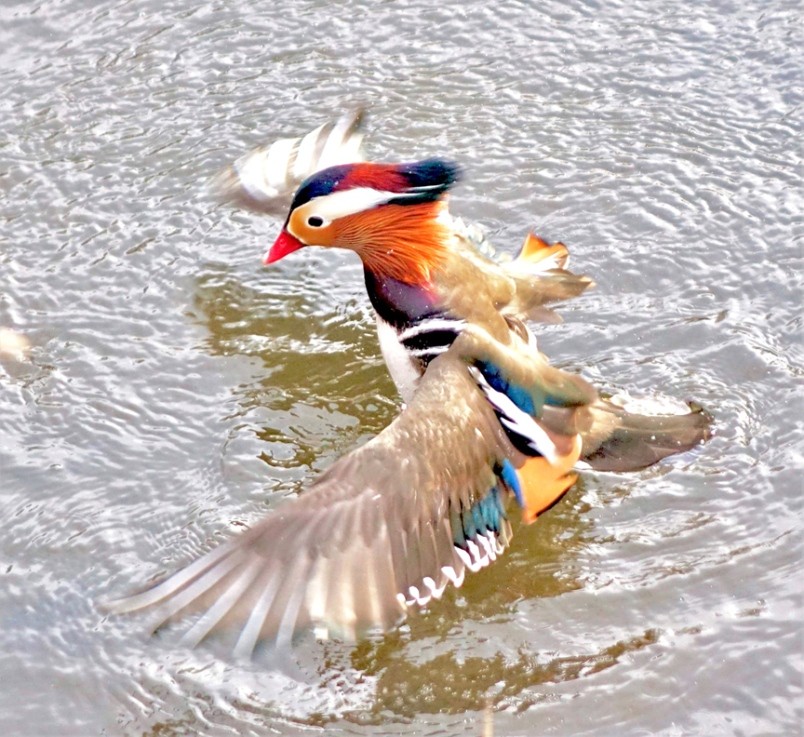
Fragile Beauty
Though not globally threatened, wild populations have declined due to habitat loss, hunting, and deforestation. Their reliance on mature woodlands with tree cavities makes them vulnerable when ancient forests are cleared. Conservation efforts in China and Russia focus on protecting wetlands and nesting areas, while introduced populations abroad serve as a colorful reminder of what could be lost.
A Closing Reflection
To watch a pair of Mandarin Ducks gliding together is to glimpse more than beauty—it is to witness a story of devotion written across the water. Their image lingers as a gentle reminder: that in a fleeting, fragile world, love and loyalty remain among the most enduring treasures.



